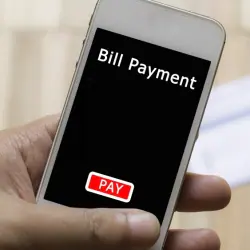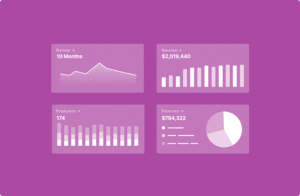Financial automation has become essential in the digital age. Better digital banking solutions enable payment scheduling, mobile notifications, and budget management. Smart automation does much more than just reminders and scheduled transactions. It predicts payment patterns, adjusts based on anomalies, and uses artificial intelligence and data analytics to understand your preferences. These systems can optimize payments, prevent overdraft fees, identify duplicate subscriptions, and provide financial insights.
Automation began with bank account payments and has evolved into a smart ecosystem with smart devices and cloud storage. These tools consolidate your financial obligations into a single dashboard for transparency and insight into your cash flow. You can set rules, such as only paying when your balance reaches a certain threshold, to maintain control and benefit from hands-free management. As expected, smart invoice automation replaces traditional financial habits.
How Smart Automation Works
Smart automation connects bank accounts, credit cards, utilities, and service providers through an encrypted platform. Once connected, the system monitors invoice information, due dates, and payments. Then it organizes payments to prevent overdrafts and ensure timely transactions. Its versatility is outstanding. If your paycheck changes or subscription costs increase, the system adjusts the payment dates or sends reminders to request your approval before making a payment.
Mobile apps offer real-time information and streamlined interfaces. AI-based expense categorization, automatic savings transfers, and budgeting suggestions make these solutions complete financial assistants. Smart automation tools integrate with your calendar to notify you before and after bill payments. This transparency lets you always know where your money is going. It’s like hiring a virtual accountant who’s available 24/7.
Benefits of Invoice Payment Automation
The benefits of smart invoice automation go beyond convenience. You don’t have to log in to multiple websites or fiddle with checks, which saves time. Human error, a major reason for late or missed payments, is eliminated. Most importantly, it safeguards your credit score by guaranteeing timely payments. Many people underestimate the damage a few missed payments can do to their credit.
Financial transparency is another advantage. Automation tools allow you to track spending and identify waste. Some systems have fraud protection algorithms that alert you if you notice suspicious activity. These levels of security often make automation safer than manual management. This order and discipline can improve financial habits and save money in the long run. Smart automation isn’t just about paying bills; it’s also about money management.
Choosing an Automation Tool
With so many options, choosing an automation solution can be challenging. Look for a platform with configurable settings, security, and a user-friendly interface. Popular programs like Mint, YNAB, and bank-specific mobile apps all offer automation features. Examples of these features include direct debits, smart notifications, and spending analytics. Look for tools with payment limits, emergency stop features, and syncing across multiple devices.
Consider using a financially adaptive tool. If your income fluctuates from month to month, choose a service that allows you to adjust your payment plan. Some systems offer financial coaching or AI-driven insights to improve your spending and savings. The most effective solutions not only settle your bills but also enable you to make more informed decisions in the future.
Overcoming Common Issues
Despite the many benefits of automated billing, many consumers worry about overdrafts, lack of control, and privacy concerns. Modern systems design takes these factors into account. You can set limits, choose bills for automatic payment, and request manual authorization for large payments in most automation programs. Such functionality gives you control while streamlining your daily operations.
Most reputable websites use bank-grade encryption and multi-factor authentication to protect your data. Regular backups and real-time alerts keep you informed and secure. Understand your options and create sensible rules that make automation easy without sacrificing convenience and security.
The Future of Automated Bill Payment
Bill automation will continue to improve thanks to developments in AI and machine learning. Imagine a system that can pay your bills and negotiate better rates for your network and insurance. Voice assistants like Alexa or Siri will enable voice-activated financial monitoring on future platforms. Moreover, predictive analytics will soon be able to identify future expenses and savings potential, empowering you to make proactive decisions.
The integration of automation with smart home and IoT devices is equally fascinating. A smart refrigerator can notify your automation system of purchases and automatically adjust your budget. Thanks to these developments, financial automation is becoming the key to smart living. It’s wonderful to be able to manage your money without having to do anything manually.
Conclusion
Automating smart bill payments is no longer a luxury but a necessity to simplify your finances and reduce stress. These tools can automate, monitor, and analyze payments to prevent errors. In addition to paying on time, you gain peace of mind, financial stability, and more time to focus on what matters.
As we embrace digital transformation in every aspect of our lives, financial automation has become essential. Tools are smarter, more secure, and more flexible than ever . With smart automation, you’ll never miss a bill again—a promise worth the investment for both homeowners and business owners.
FAQs
1. Describe smart bill automation.
Smart bill automation automatically schedules and pays bills, helping you avoid late payments, manage your cash flow, and track your expenses.
2. Can I securely automate my bill payments?
Most systems use encryption and multi-factor authentication to protect your data. Always use a trusted service with clear policies.
3. Can I still manage my finances if everything is automated?
Of course. Most systems allow you to automatically invoice, set limits, and authorize payments before making them. Automation supports, but doesn’t replace, judgment.
4. What happens if my balance is low?
Many tools warn you before a payment is processed or prevent overdrafts. Some banks defer or pause payments to avoid penalties.
5. Do all banks offer automation?
Some modern banking and financial apps offer automation. You can check your bank’s app or website to see what it does, or use a third-party smart payment solution.




